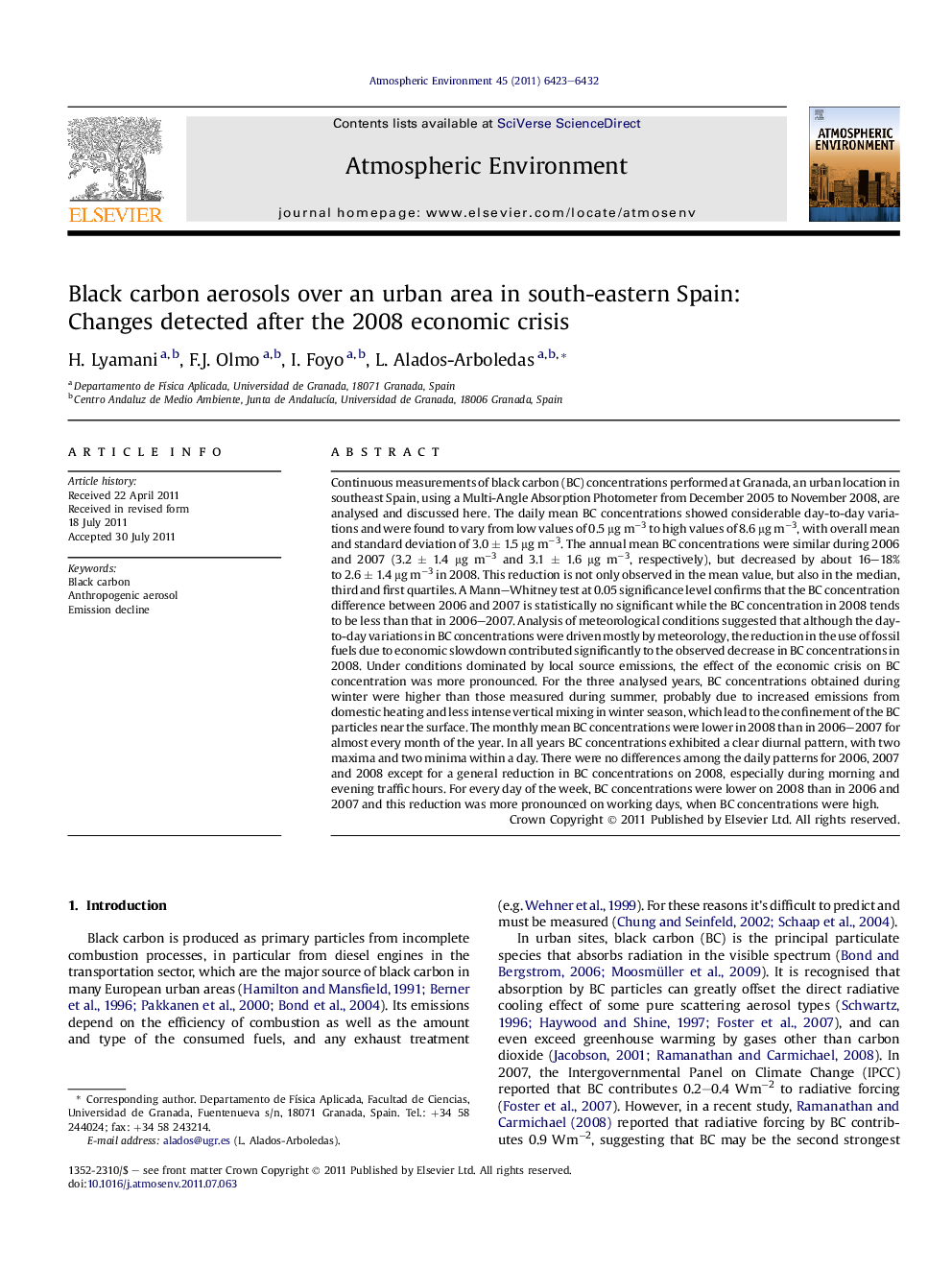| Article ID | Journal | Published Year | Pages | File Type |
|---|---|---|---|---|
| 4439423 | Atmospheric Environment | 2011 | 10 Pages |
Continuous measurements of black carbon (BC) concentrations performed at Granada, an urban location in southeast Spain, using a Multi-Angle Absorption Photometer from December 2005 to November 2008, are analysed and discussed here. The daily mean BC concentrations showed considerable day-to-day variations and were found to vary from low values of 0.5 μg m−3 to high values of 8.6 μg m−3, with overall mean and standard deviation of 3.0 ± 1.5 μg m−3. The annual mean BC concentrations were similar during 2006 and 2007 (3.2 ± 1.4 μg m−3 and 3.1 ± 1.6 μg m−3, respectively), but decreased by about 16–18% to 2.6 ± 1.4 μg m−3 in 2008. This reduction is not only observed in the mean value, but also in the median, third and first quartiles. A Mann–Whitney test at 0.05 significance level confirms that the BC concentration difference between 2006 and 2007 is statistically no significant while the BC concentration in 2008 tends to be less than that in 2006–2007. Analysis of meteorological conditions suggested that although the day-to-day variations in BC concentrations were driven mostly by meteorology, the reduction in the use of fossil fuels due to economic slowdown contributed significantly to the observed decrease in BC concentrations in 2008. Under conditions dominated by local source emissions, the effect of the economic crisis on BC concentration was more pronounced. For the three analysed years, BC concentrations obtained during winter were higher than those measured during summer, probably due to increased emissions from domestic heating and less intense vertical mixing in winter season, which lead to the confinement of the BC particles near the surface. The monthly mean BC concentrations were lower in 2008 than in 2006–2007 for almost every month of the year. In all years BC concentrations exhibited a clear diurnal pattern, with two maxima and two minima within a day. There were no differences among the daily patterns for 2006, 2007 and 2008 except for a general reduction in BC concentrations on 2008, especially during morning and evening traffic hours. For every day of the week, BC concentrations were lower on 2008 than in 2006 and 2007 and this reduction was more pronounced on working days, when BC concentrations were high.
► Seasonal, weekly and diurnal variation of BC in an urban area are analysed. ► BC showed high levels in winter and low levels in summer. ► Annual mean BC density decreased by 16–18% in 2008 compared to 2006–2007. ► This decrease seems to be associated to emission reductions due to economic crisis. ► BC densities showed clear diurnal and weekday cycles.
